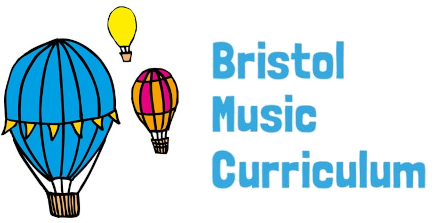Key Learning Objectives: To feel the pulse and identify an ostinato. To learn a traditional song. To improvise actions to the pulse/ beat. Starter activity: Choose one of the pulse or rhythm activities from the Rhythm Starter Bank. Main activity: Listening and response activity using the song ‘Filimioomiooriay’. Ask the pupils to pat their knees to the pulse/beat […]
Tag: pulse
Year 4, Unit 2: Rhythm – Lesson 5
Key Learning Objectives: To develop understanding of notating rhythms. To compose and notate rhythms. Starter activity: Select an activity from the Rhythm Card Starter Bank. Main activity: Create four beat phrases using the provided Lego notation sets and Rhythm fraction wall, referring to the note value chart to identify the different note lengths within the two […]
Year 4, Unit 1: Water – Lesson 1
Key Learning Objective: To explore the origin of sea shanties. Additional Learning Objective: To feel the pulse and clap rhythms at various tempi. Starter activity: Introduce two sea shanties, ‘What Shall We Do With the Druken Sailor’ and ‘Don’t Forget Your Old Shipmate’, discuss the similarities between the two shanties. Main activity: Learn ‘Three Pirates’ from the ‘World Voice […]
Year 3, Unit 2: Junk Percussion – Lesson 3
Key Learning Objectives: To understand that rhythm is a pattern made of notes of different lengths. To understand that rests are beats of silence. To play and compose rhythms that use rests. Starter activity: Introduce the concept of rests using four cups to represent four beats. The cups are positioned to either represent a sounded […]
Year 3, Unit 2: Junk Percussion – Lesson 2
Key Learning Objectives: To understand that the 1st beat of the bar is the ‘strong’ beat. To further consolidate understanding of duration (pulse) using kinaesthetic learning to internalise Starter activity: Select an activity from the Rhythm Starter Bank. Main activity: Recap the definition of ‘pulse’ from lesson one, playing a different 4/4 track from the […]
Year 3, Unit 2: Junk Percussion – Lesson 1
Key Learning Objectives: To understand that pulse is a regular beat in music. To develop understanding of pulse using kinaesthetic learning. Starter activity: Select an activity from the Rhythm Starter Bank. Main activity: Introduce the concept of the pulse, playing either ‘Mmmbop’ or ‘Oye Como Va’, both pieces of music in 4/4 time. March around the […]
Year 2, Unit 1: Water – Lesson 6
Key Learning Objective: To sing expressively. Additional Learning Objectives: To listen with concentration to a range of high-quality music. To appreciate how the inter-related dimensions of music ‘work together’ in a composition to create an atmosphere or effect. Starter activity: Sing and record ‘Big boats, small boats’, sung rhythmically, with good pitching of leaps and scales, expressing the […]
Year 2, Unit 1: Water – Lesson 5
Key Learning Objective: To keep a steady pulse and to play rhythms together. Additional Learning Objectives: To feel the pulse whilst listening and internalise the pulse through movement. To build an understanding of the pulse and its role as the foundation of music. Begin to understand that rhythms are patterns of long and short sounds. The […]
Year 1, Unit 2: Animal Rhythms – Lesson 2
Key Learning Objectives: To feel and internalise the pulse/beat. To identify the strong beat and demonstrate with an action/clapping. Starter activity: Warm up and Stomp Cannon, warming up voices, brains and bodies with an interactive chant. Main activity: Reminder of the concept of a pulse/beat. Plenary: Listening and response activity using the chant, ‘Say Boom Chicka Boom’, […]
Year 1, Unit 2: Animal Rhythms – Lesson 1
Key Learning Objectives: To feel and internalise the pulse/beat. To identify the strong beat and demonstrate with an action/clapping. Starter activity: Warm up and Stomp Cannon, warming up; voices, brains and bodies with an interactive chant. Main activity: Introduction to the concept of a pulse/beat. Plenary: Listening exercise using the focus song ‘This Train’, identifying a pulse and […]
